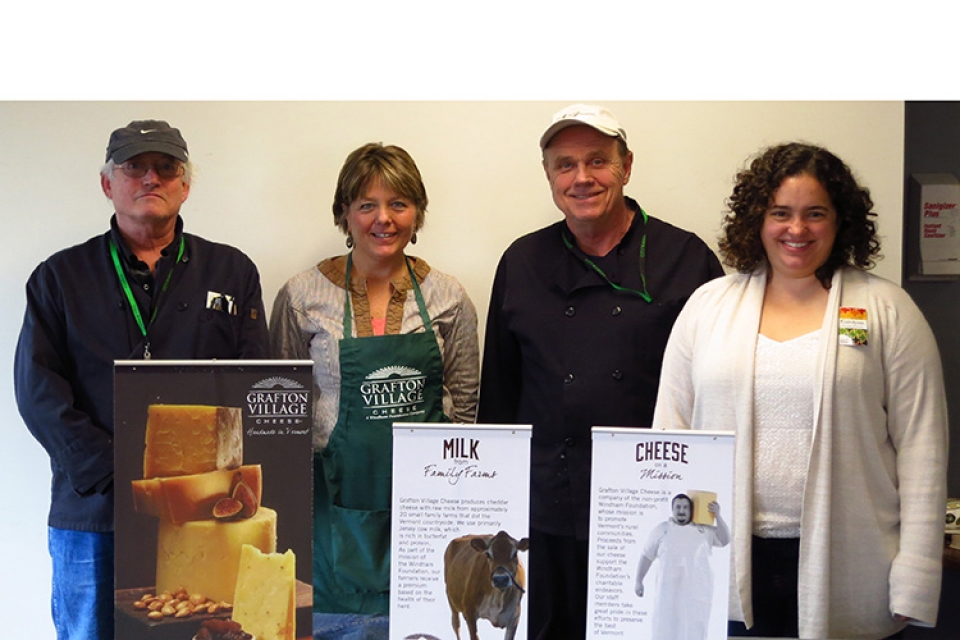Grafton Village Cheese Tasting
After taking a brief hiatus, City Market staff cheese tastings are back, and we kicked it off with a special visit from Wendy Brewer from Grafton Village Cheese. The Grafton Cooperative Cheese Company (yep, they started as a cooperative of dairy farmers!) was founded in 1892 to make surplus milk into cheese. In 1912, a fire destroyed the Grafton Cooperative Cheese Company’s factory, and the company laid dormant for a few decades. In the mid-1960s, the Windham Foundation restored the company and now serves as the parent company of Grafton Village Cheese. The Foundation’s mission is to promote Vermont’s rural communities, and Grafton Village Cheese fulfills this mission by purchasing milk from local dairy farms (primarily Jersey cow milk), participating in the local economy, and supporting local community events.
After the whey has been drained off, the curd is cut into slabs which are then turned 3 to 4 times within 2 to 3 hours (this is the cheddaring part of the process). When the acidity of the remaining whey reaches the correct level, the slabs are stacked on the side of the vat. Then, the slabs are cut into pieces by a milling machine and salt is added. The cheese curd is then put into covered hoops and kept on a press overnight. In the morning, the cheese is removed from the hoops and wrapped and sealed in cartons and moved to an aging cooler. Flavored cheddars are generally aged at least 6 months and the other cheddars are aged 1 year and up.
Of Grafton Village Cheese’s cheddars, we sampled the 1 Year, 2 Year, 4 Year, 6 Year, and the Maple Smoked. The flavor of the cheddars were bolder and more robust the older the cheese, and the younger cheeses were much more pliant, making them great for melting (Wendy loves using the 2 Year for quesadillas). Of the cheeses sampled, the 6 Year was definitely one of the favorites, as was the Maple Smoked, which had a pleasant smoky, but approachable, flavor.
Grafton Village Cheese has also branched out of cheddars and produces some specialty cheese that are aged in their aging cave. Of these cheeses, we sampled their Traditional Clothbound, which was mild and approachable, and Vermont Leyden, which was robust with a strong cumin flavor (and which Wendy suggests sprinkling over chili).
We had a lot of fun with Wendy sampling the cheeses, as well as some great pairing items (apples, chutney, nuts, and dried fruit). Thanks to Wendy and Grafton Village Cheese for the informational tasting!
You can find a variety of Grafton Village Cheese in our Cheese Department. Want to try a sample? Just ask one of our friendly Cheese Department staff members.
